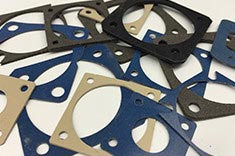EMI Shielding Products
- Custom Gasket Fabrication
- Connector Gaskets
- Bonded O Ring
- Custom Gaskets
- Conduct-O-Knit Knitted Wire Mesh
- Conduct-O-Seal Combo Gasket
- Conduct-O-Elastomer
- Conduct-O-Seal Oriented Wire in Silicone Gasket Material
- Conduct-O-Mesh Tape
- Conduct-O-Foam
- Conduct-O-Bond
- Optical Filters For Electronic Displays
- Shielded Vent Panels
- ESC Board Level Shielding
- 300 Series
EMI Shielding and Medical Devices
According to the World Health Organization, over 10,000 types of medical devices are in use in the medical field. These devices range as diversely as specialized beds and CT scan machine. These devices are designed to improve quality of life, reduce pain, and heal, but if they do not function properly, the consequences could be dire. What would happen is a life-saving defibrillator did not correctly work in a time of need? The results could be dire.

So much detail and care are put into the creation of each device. Engineers consider the application and effect on a human body, but they also greatly consider integrating adequate EMI shielding into their design. A medical device manufacturer and engineer must consider the impact of EMI on their product and the EMI the device creates.
EMI and RFI shielding prevent the failure of medical equipment and maintain devices that meet federal regulations. EMI is created by electronic devices (big and small), and so shielding is vital to prevent the malfunctioning of electronic devices nearby.
Small, lightweight products are the way of the future, but manufacturers should not sacrifice shielding to meet market standards. Any non-conductive plastic needs a metal shield to ensure total protection from EMI. A non-conductive plastic needs EMI shielding because, on there own, they do not prevent the emission of EMI, nor do they protect EMI from outside influences.
Our team can help you design shielding that does not add much weight and fits in existing designs. Do not underestimate the negative influence of EMI on electronic devices—especially on medical equipment.
EMI Shielding
- Spliced and Molded EMI Shielding GasketsEMI shielding gaskets are sold in several different materials with a limitless amount of sizes and shapes. Typically, base materials are made from fluorosilicone or silicon that has fillers like silver, silver-plated aluminum, and nickel-plated graphite. These conductive elastomers are one of the most versatile products for EMI shielding gaskets.
- Popular Materials for EMI Shields and Gaskets
- Manufacturing Options for EMI Shielding
- Electromagnetic Interference
- Understanding RFI



